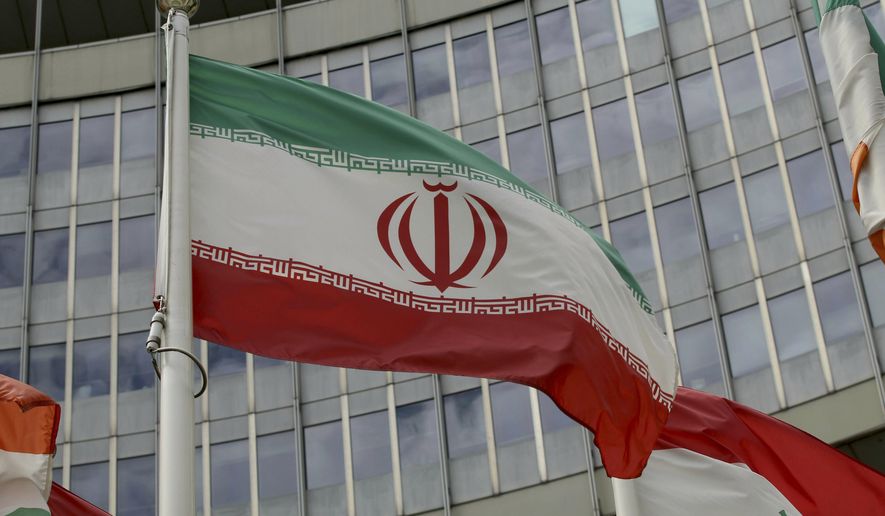Fighter jets and main battle tanks will likely top Iran’s shopping list when a U.N.-mandated arms embargo is set to be lifted next year, allowing its leaders to upgrade their conventional military hardware.
“Their current air force is dated,” a senior defense intelligence official said Tuesday during the release of “Iran Military Power,” the first-ever in-depth public analysis of Iran’s military capabilities and shortcomings by the U.S. government.
Within the last two years, the Defense Intelligence Agency has released similar reports on the military capabilities of Russia and China. The release of the survey comes amid rising political and security tensions between Iran and the U.S., as Tehran has lashed out in the wake of President Trump’s decision to pull out of the 2015 Iran nuclear deal and reimpose harsh economic sanctions.
“I think [the Iran report] is significant. It reflects a recognition of the nature of the threat that we face,” said Tzvi Kahn, a senior Iran analyst at the Foundation for the Defense of Democracies.
Iran has a wide-variety of U.S.-built fighter jets — it’s the only country in the world still flying the F-14 Tomcat — that were acquired before the Islamic Revolution in 1979 that toppled the U.S.-backed Shah.
“Tanks are another thing that they haven’t built or been able to acquire for years,” the senior defense official said.
Iran is likely to look to Russia and China, U.S. officials say, to bolster their conventional military hardware. Although sanctions have restricted defense spending in Iran, government officials in Tehran have placed enough emphasis on missiles that its funding shouldn’t be reduced.
While Iran is significantly weaker than the United States and wouldn’t last long in a full-scale battle, the country has had more success using its proxies such as Hezbollah to carry on the fight, Mr. Kahn said.
“That is the core of their strategy. That is how they’ve been able to ’punch above their weight,’” he said. “When you have their power so diffuse throughout the Middle East, it makes it that much more difficult for us to confront them.”
Iran still identifies the United States as its primary adversary, owing to its presence in the Middle East and support for Israel. The leading Shiite power in the region, Iran has long been locked in a struggle with Saudi Arabia and other U.S. allies for influence and clout in the region.
“Iran sees itself as closer that ever to achieving its goal,” the report stated. “Although still technologically inferior to most of its competitors, the Iranian military has progressed substantially over the past few decades.”
According to the DIA report, the country’s military has three core capabilities: ballistic missiles; naval forces capable of threatening navigation along the Persian Gulf and the Strait of Hormuz; and its unconventional capabilities, including the use of proxies in other countries.
“Lacking a modern air force, Iran has embraced ballistic missiles as a long-range strike capability to dissuade its adversaries from attacking,” said Christian Saunders, a DIA senior intelligence analyst focused on Iran. “Iran has the largest missile force in the Middle East with a substantial inventory of close-range ballistic missiles, short-range ballistic missiles and medium-range ballistic missiles that can strike targets throughout the region as far as [1,200 miles] away.”
Like other countries, Iran also is taking steps to improve its cyberwarfare abilities and use of drones on a battlefield. Defense officials said Iran was responsible for cyberattacks in Saudi Arabia and Qatar.
“We know it’s something they’re focused on and continue to develop,” a senior defense official said.
Iran has already violated the U.N. embargo against them, Mr. Kahn said, and that will likely dramatically increase once it expires in November 2020.
“I’m very concerned about the arms embargo,” Mr. Kahn said. “This arms embargo is something that should have been permanent.”
• Mike Glenn can be reached at mglenn@washingtontimes.com.




Please read our comment policy before commenting.